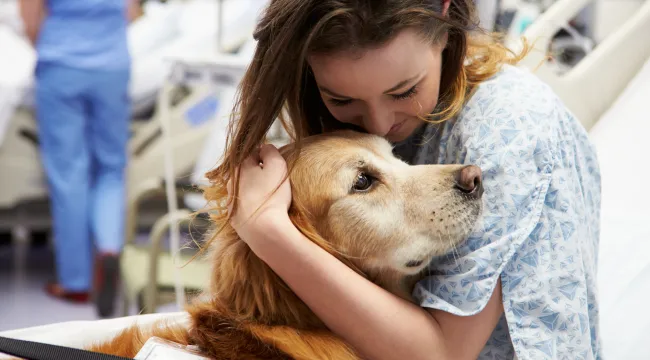
Understanding first aid for dogs is an essential aspect of responsible pet ownership. It equips you with the knowledge and skills to respond swiftly and effectively in emergency situations, potentially saving your furry friend’s life. Being prepared for such scenarios not only helps in managing the immediate needs of your pet but also ensures that you can provide the right care until professional veterinary help is available. This readiness not only brings peace of mind but also demonstrates a deep commitment to the health and safety of your canine companion.
Understanding Common Dog Emergencies
When it comes to our canine companions, certain emergencies are more prevalent and recognizing them can be crucial. Common issues include cuts, burns, choking, and poisoning, each presenting unique signs and symptoms. Some pooches are more accident or danger prone than others but it’s always important to know how to deal with potential health concerns that may arise.
- Cuts: These can range from minor scrapes to deep wounds. Look for bleeding, noticeable discomfort, or limping.
- Burns: These may result from chemicals or heat. Signs include red, blistering skin, and your dog may react sharply to touch.
- Choking: Indicators include difficulty breathing, excessive pawing at the mouth, or a panicked response.
- Poisoning: Symptoms vary based on the toxin but often include vomiting, diarrhea, excessive drooling, or seizures.
In each of these scenarios, the key is to observe your dog’s behavior and physical condition closely. Quick identification of these signs can be the difference in effectively managing the emergency.
Basic First Aid Techniques for Dogs
In emergencies, prompt and correct first aid can be life-saving for your dog. Here are some essential techniques:
- Stopping Bleeding: For minor cuts, apply gentle pressure with a clean cloth. If the bleeding is severe and from a limb, a tourniquet may be necessary. Place it between the wound and the body, and loosen it every 15-20 minutes.
- Treating Minor Wounds: Clean the wound with mild soap and water. Apply an antibiotic ointment and cover it with a sterile bandage. Change the dressing daily and watch for signs of infection.
- Heimlich Maneuver for Choking Dogs: If your dog is choking and cannot breathe, stand behind them, place your arms around their waist, and make a fist. Place your fist just below their rib cage and give a quick, firm push upwards and forwards. Repeat until the object is dislodged.
- Responding to a Dog in Shock: Signs of shock include weak pulse, shallow breathing, and lethargy. Keep your dog warm and calm while you transport them to the vet. Elevate their hindquarters slightly if they are unconscious, but ensure they can breathe comfortably.
Remember, these are immediate measures. Always follow up with a visit to the vet for a thorough check-up and further treatment if necessary.
Handling Poisoning and Allergic Reactions
If you suspect your dog has ingested something toxic or is having an allergic reaction, prompt action is key. Here’s what to do:
- Identify the Toxin: If possible, figure out what your dog has ingested. This information is crucial for your vet.
- Don’t Induce Vomiting Unless Instructed: Only induce vomiting if specifically advised by a vet or poison control.
- Call Your Vet Immediately: Time is of the essence in poisoning cases. Contact your vet or a pet poison helpline right away.
- Watch for Symptoms: Symptoms of poisoning can include vomiting, diarrhea, seizures, lethargy, and loss of appetite. Allergic reactions may manifest as hives, swelling, or difficulty breathing.
- Keep Emergency Numbers Handy: Have your vet’s number, as well as a pet poison control center’s number, easily accessible.
Be aware of common household items and foods that are dangerous for dogs, including:
- Chocolate
- Grapes and Raisins
- Xylitol (found in sugar-free gum and some peanut butters)
- Onions and Garlic
- Certain Plants (like lilies and poinsettias)
- Household Cleaners and Chemicals
Prevention is the best approach, so ensure these items are out of your dog’s reach. In case of an emergency, having this knowledge and a plan can make all the difference.
When to Seek Veterinary Help
Knowing when to seek immediate veterinary help is crucial in managing dog emergencies. Here are some guidelines:
- Severe Symptoms: If your dog shows severe symptoms like excessive bleeding, unconsciousness, seizures, or difficulty breathing, it’s time to rush to the vet.
- Suspected Poisoning: If you suspect your dog has ingested something toxic, don’t wait for symptoms to appear. Immediate veterinary intervention can be life-saving.
- Persistent Symptoms: Symptoms like vomiting, diarrhea, or lethargy, if persistent, warrant a vet visit. They could be signs of underlying health issues.
- Injury and Trauma: Any injury, such as cuts, burns, or suspected fractures, especially if they’re severe, require professional medical attention.
- Allergic Reactions: Signs of allergic reactions, like swelling or hives, especially around the face, need immediate veterinary care.
These kinds of emergency situations can be stressful to any pet owner! Remember that professional veterinary care is often necessary to fully assess and treat your dog’s condition.
Prevention Tips
Preventing accidents and injuries in dogs is as crucial as knowing how to respond to them. Here are some effective prevention tips:
- Safe Environment: Create a safe living space for your dog. Remove hazardous objects and toxic substances that can be ingested or cause injury.
- Regular Exercise: Ensure your dog gets regular exercise to maintain good health and prevent obesity, which can lead to various health issues.
- Training and Socialization: Proper training and socialization can prevent behavioral issues and accidents. Teach your dog basic commands and how to interact safely with people and other animals.
- Regular Veterinary Check-Ups: Routine vet visits are essential for early detection and prevention of health issues. Regular check-ups can catch potential problems before they become serious.
- Healthy Diet: A balanced diet is key to maintaining your dog’s health. Avoid feeding your dog harmful human foods and stick to a diet recommended by your vet.
- Pet Insurance: Consider investing in pet insurance. It can be a lifesaver in managing the costs of unexpected illnesses or accidents, ensuring your dog gets the best possible care without financial strain.
By taking these preventive measures, you can significantly reduce the risk of accidents and ensure a healthier, happier life for your dog. Regular vet visits and pet insurance are especially beneficial, providing peace of mind and support in maintaining your dog’s well-being.
Conclusion
Being informed and prepared can make a significant difference in ensuring the safety and well-being of your furry friend. Regular training in first aid techniques, coupled with a proactive approach to prevention, will equip you to handle emergencies more effectively. Remember, your awareness and readiness can be life-saving for your canine companion. Stay informed, stay prepared, and continue to be the best caretaker for your loyal friend.



